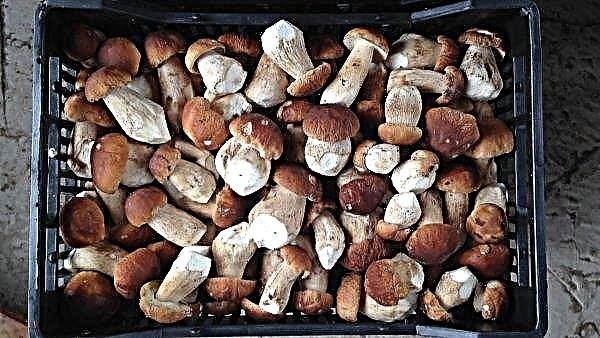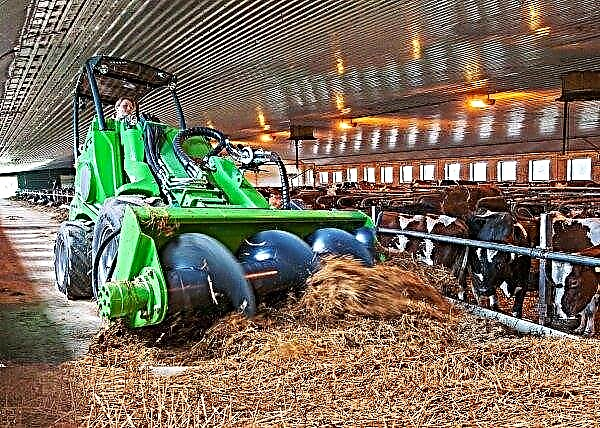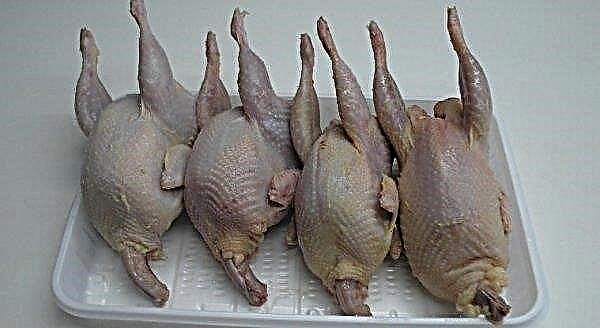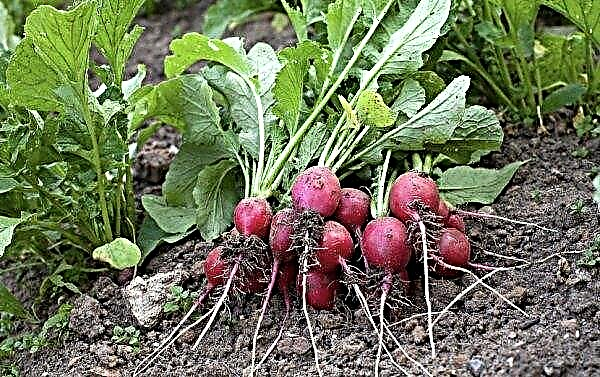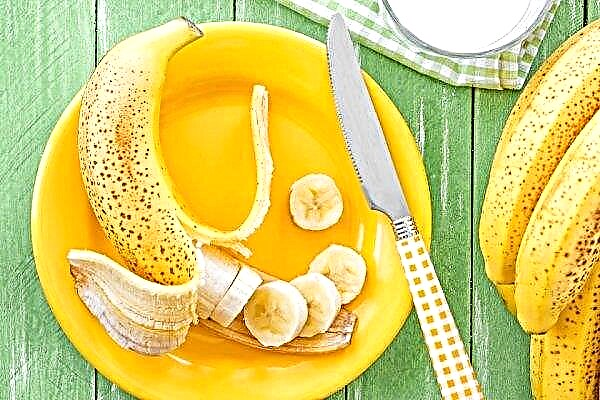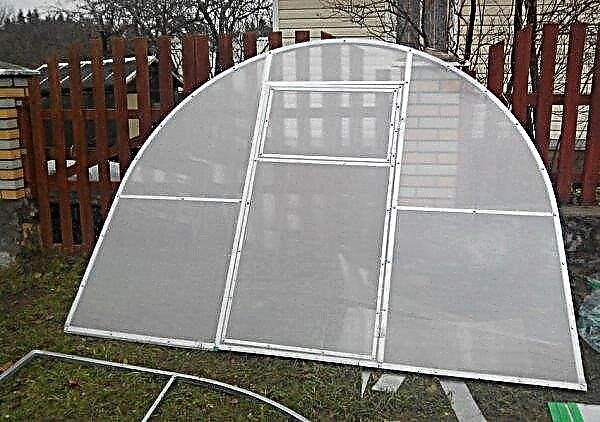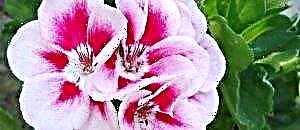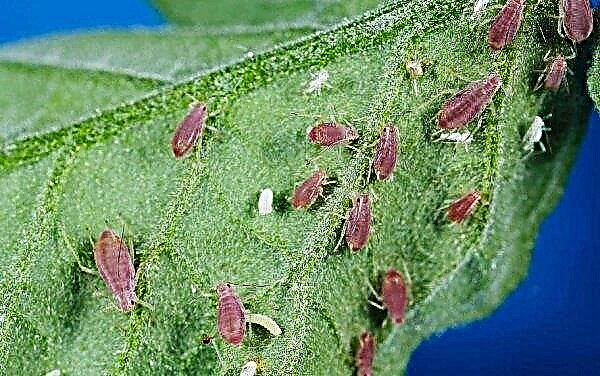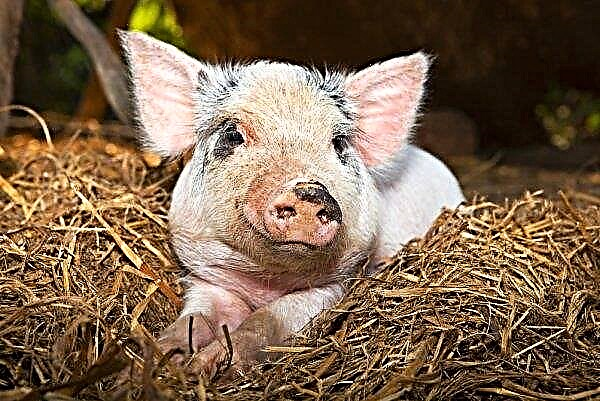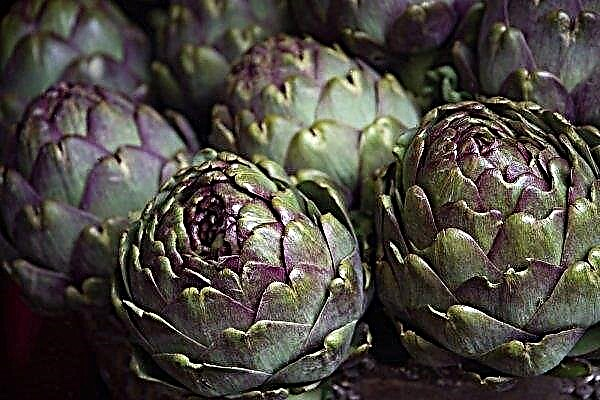Planting onions in the winter provides earlier products, is less affected by the onion fly and saves a lot of time, so many landowners plant part of the planting material in the winter to get a crop for spring-summer consumption. We learn what types of onions can be used for winter planting, what treatment to do before planting, how to plant and grow properly.
The best varieties of winter onions for planting
For winter onion plantings, certain varieties should be taken, which can be formed with a shorter daylight hours, have good frost resistance and do not shoot.
Consider varieties of onions suitable for winter planting:
- Shakespeare. This is an early-growing variety with a semi-acute taste, which is resistant to many diseases. It has a rounded shape, white flesh and brownish husk.

- Centurion. Harvest hybrid with roundly elongated onions with white flesh and husk of golden and brown tones. Resistant to disease. It is capable of being well stored.

- Radar. An unpretentious medium-ripening variety with good keeping quality. It has yellow dense scales, can reach large sizes.

- Senshui. Early variety with excellent yield, unpretentious. Resistant to powdery mildew. Forms bulbs of rounded flat shape with dense scales. It can be stored up to six months.
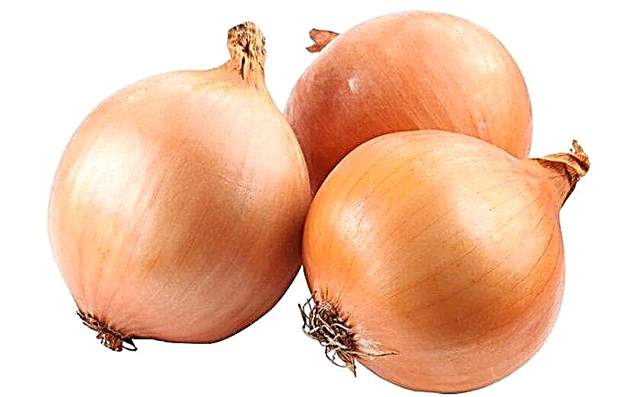
- Ellan. Gives an early harvest, but has a poor keeping quality. It has a rounded shape and light husk of straw color.

- Kip Well. It is well stored, resistant to pests and diseases. Forms bulbs of elongated shapes.

- Is Struton. Variety of medium ripening, resistant to diseases and pests. It forms large oval bulbs with a golden brown husk and bright flavor. It can retain its qualities for up to 8 months.
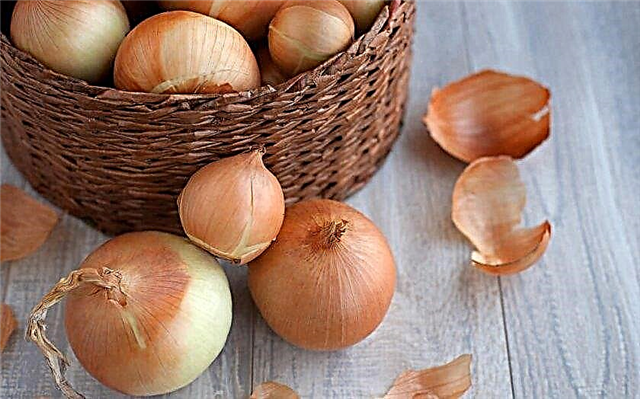
- Danilovsky. Mid-season peninsular onions with excellent taste, good yield and keeping quality. It has a rounded flat shape and juicy pulp of purple tones, dressed in flakes of red color.

- Arzamas. Old mid-season variety, time-tested, with a sharp taste. It has round bulbs and a dark yellow husk.

Optimal planting dates for the winter
Winter onion sets are usually sown in October-November. Sowing dates largely depend on the growing region and its climatic features. Often, gardeners pick them up empirically, taking into account the weather forecast, the probability of thaws. After all, if you plant the bulbs early, they will have time to ascend before the frost and die. And if planted too late, the bulb will not have time to take root at all and the harvest will not be early. In general, it is better to tighten the sowing dates a bit than to plant too soon, since in the latter case you can be left without a crop. So do not rush.
Estimated planting dates - a month before the onset of steady frost. The optimum temperature for planting seed is considered to be a range of daytime temperatures of 0 ... + 5 ° C for small night frosts (up to -4 ° C). The temperature of the soil at this time is usually at + 2 ... + 4 ° C.Did you know? The most suitable for winter crops are considered oatmeal (up to 1 cm) and onion set 1 category (1–1.5 cm). The remaining sevka categories are planted to obtain early greenery (per feather).
Do I need to soak winter onions before planting in the fall
Disinfection against onion diseases in winter crops should be carried out. After all, the bulbs may experience some periods of moisture saturation and it is recommended to protect them from fungal diseases. At the same time, soaking for too long can threaten the swollen bulbs with freezing during the onset of frost, therefore, effective preparations are chosen for disinfection with a short immersion of planting material in the solution and subsequent drying before planting.
In this case, stimulants are usually not used, except for late landings, when there is not enough time for rooting.
Important! Before processing, it is imperative to sort out the seeds and dispose of the diseased specimens.
What and how to soak correctly
For presowing treatment, it is recommended to soak the onions in warm (+ 45 ° C) saline solution - 1 tbsp. l on 1 liter of water. Keep it in such salt water should not be long - only 5 minutes. Salt disinfects it a little, and heating is needed so that the bow does not go into arrows.
The onion can be heated by the battery or lowered for several minutes in hot (+ 60 ° C) water. In such water, you can add soda - 1 hour per 10 liters of liquid.
Then the sowing should be disinfected.
It is best to use one of the following drugs for disinfection:
- Blue vitriol. A warm solution is made at the rate of 1 hour of blue powder in 2 liters of heated water.
- Potassium permanganate. A strong solution of potassium permanganate is made - 10–20 g is dissolved in 1 liter of warm water.

Now the seed can be planted in prepared beds.
Features of the preparation of the site and soil
First of all, you need to choose the right site for landing. It should be well lit by sunlight, and also protected from gusts of wind.
You should not plant this vegetable on a site where cucumbers, cabbage, legumes, carrots and onions were previously grown. Good predecessors are cereals (except oats), potatoes, beets, tomatoes, rape, parsley, celery.
The site must be cleaned of weeds and plant debris and dug up 30 days before planting onion sets in the ground. To get a good harvest when digging the soil, you need to add compost (6 kg per 1 m²) or rotted manure, as well as potassium-phosphorus fertilizers (30 g per 1 m²) as top dressing. Then the site must be leveled with a rake. Onions love loose, well-permeable soil with a neutral reaction. If the soil is acidic, then it must be produced with chalk or lime, because on such soils the onion grows poorly and gives a poor yield.Important! The site should not be flooded with water in the spring - this will lead to rotting of the bulbs.
Landing technology
When the landing site is completely ready, you can begin to plant onion sets. Usually planting is carried out in rows, the distance between which is not less than 20–40 cm. Bulbs are placed to a depth of 5–6 cm with an interval of 5–10 cm, depending on the variety. First, grooves are prepared, then planting material is placed, which is covered with soil. Above the planted bulbs, the soil should be about 3 cm.
On 1 ha there is about 4 kg of planting material. Planting can not be watered, but it is advisable to cover with mulch to protect against frost. As mulch, you can use leaves, sawdust, needles, spruce and pine branches, the remains of vegetation. You can also protect the soil from frost with a special agrofibre.
From above it is desirable to close everything with branches so that wind gusts do not demolish the mulch. It is not recommended to rush to the shelter of plantings and do this only when cold weather sets in with a little frost so that the bulbs do not rot during warming. In winter, when snow falls, it is advisable to throw more snow on the site. This will protect the onion sets from freezing.
Did you know? A bow helps a person adapt to changing time zones and is useful for travelers, members of the flight crew. Tourists traveling on holidays to other continents should consider this and eat dishes with this vegetable in a new place.
Care after planting onions
After planting, onion care is as follows:
- When the temperature rises above 0 ° C and the threat of frost passes, the beds are cleaned of branches and mulch. This will allow the soil to warm up under the sun.
- In early spring, you can cover the planting with covering agri-material at night to protect against the cold and accelerate the ripening of the crop.
- The soil in the planted area should be loosened, and then carry out the cultivation process after rain and watering. Together with loosening, weed removal should be carried out, which draws nutrients and moisture.
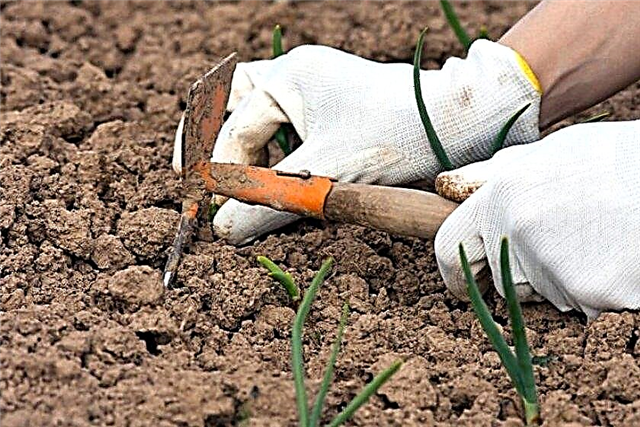
- Landings for a good harvest should be fed with infusion from chicken manure. To do this, chicken droppings are dissolved in water in a ratio of 1:20. Re-feeding is carried out when green feathers appear. You can also use mineral fertilizers containing nitrogen, phosphorus and potassium. In the second half of the growing season, nitrogen-containing fertilizers must be reduced or eliminated altogether.
- Measures should be taken to control insect pests: for example, sprinkle tobacco dust mixed with chalk or lime between rows.
Did you know? One of the oldest cookbooks in the form of clay tablets belongs to Ancient Mesopotamia and includes recipes with different types of onions.
Harvesting and storage
Already in the middle of summer (July) winter onions can be harvested. The vegetable itself will signal when it needs to be dug up. Signs that he is fully ripe are yellow leaves that fall to the ground, as well as the appearance of dry husks on top of the fruit. The ripened bulb is easily removed from the soil. 2-3 weeks before harvesting, watering the beds with onions should be discontinued.
You need to dig onions in dry sunny weather. Do not overexpose the vegetable in the ground, as it will begin to take root and will be poorly stored. Harvesting can be done as the onions ripen, because not all bulbs ripen at the same time.
Before storage, the vegetables must be thoroughly dried.
To do this, carry out the following activities:
- after digging, leave the onions in the garden for 1-2 days for drying (do not peel the vegetables from the soil by tapping on a hard surface - this can damage them);
- in rainy weather, onions are dried in the attic, under a canopy or in another place well-ventilated and protected from rain;
- during the drying period, the vegetable head must be turned over;
- that the onion has dried, the neck of the onion head will say - it will be dry, and the husk will peel off a little;
- Slightly rotten or damaged specimens should be set aside for eating.
Dry and whole specimens selected for storage can be stored as follows:
- Cut off the neck and place the heads in nets or pantyhose from kapron, and then hang them in a dry, dark place (basement, cellar, underground).
- Place onions in wooden or plastic boxes. The boxes should be shaken periodically so that there is a uniform flow of air.
- The necks can not be cut, but braided by their braids and suspended in the basement. When stored in this form, the heads beginning to sprout will be immediately visible.
Useful tips for growing winter onions
Gardeners give the following recommendations for growing winter onions:
- Be sure to stick to the crop rotation.
- If a couple of days before digging a vegetable, carefully cut the root part of the bulb with a shovel and slightly raise it along with a lump of soil, then a decrease in moisture access will accelerate the ripening of the crop.
- In winter, the sowing usually does not reach the spring (shallow).
- When planting, you need to take care that the plants are not planted too thickly - thickening will reduce the yield and may cause the appearance of some diseases. Between the bulbs, depending on the variety, should be 5-10 cm.
- Loosening with weed removal should be carried out without fail, otherwise it significantly reduces yield.
- Excessive watering is harmful to the onion, it can cause rotting, but drying out the soil is also unacceptable. It will be good to mulch the plot with planting - mulch will perfectly protect the soil from the cold and drying out on hot days, and will also inhibit the growth of weed grass.
- The use of wood ash will not only feed the plant well, but will also scare away many pests, and will also be an excellent prevention of fungal diseases.
- Onion arrows need to be cut, then the fruits will be better.
- Onions grown on feathers cannot be treated with chemicals. If they were nevertheless used, then the pen can be cut off for eating only after 9-12 days.














